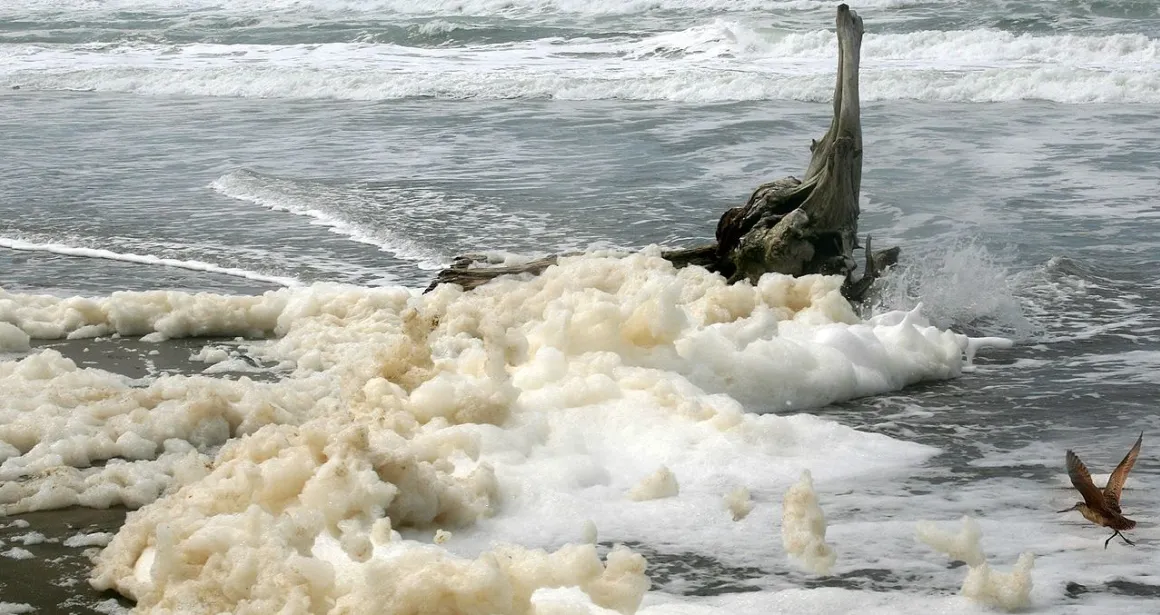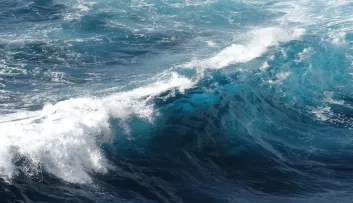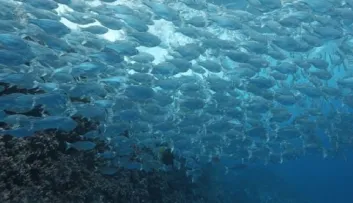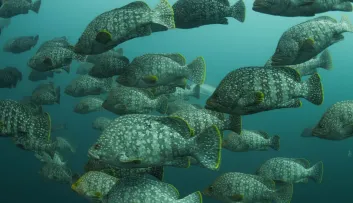The Ocean and the Climate 2mn
Eutrophication, water pollution?
Eutrophication. Behind this technical term lies a phenomenon that you may have noticed while walking along the seashore: the sea foaming!

What is eutrophication?
Eutrophication occurs when the environment becomes excessively fertilised. Nutrients from fertilisers can be transported through groundwater and rivers to coastal waters and encourage the growth of algae.
Excess algae fed by nitrates and phosphates prevent light from getting through and disrupt the growth of other plant species. The slimy mucus of Phaeocystis builds up in the gills of molluscs and fish, preventing them from filtering seawater or breathing.
Decomposition of phytoplankton by bacteria consumes almost all the oxygen in a confined environment such as an estuary. This is known as asphyxiation or anoxia of the environment, which affects the survival of plant and animal species.
Eutrophication exacerbates bloom phenomena and their occurrence. Natural phenomenon becomes problematic for the marine ecosystem.
The foaming sea, a natural phenomenon
The foaming sea is a natural phenomenon linked to the presence of a unicellular alga of a few micrometres in diameter, Phaeocystis globosa, which, when gathered in large colonies, forms an abundant foam. The size of these colonies is substantial and grazers such as copepods (small crustaceans) or microzooplankton have difficulty in eating them, which explains their expansion.
This foam is created by the decomposition of the Phaeocystis and is accentuated by the wind or rough sea. The mucus surrounding the micro-algae then becomes emulsified in a similar way to whisked eggs. This alga is not toxic, but it can be a nuisance to fishermen by clogging their nets
Why is it called "Vert de Mai" (Green of May) in French?
This phenomenon is locally known as the "Vert de mai" (the Green of May) as it usually occurs in spring when the days are longer and the light is more prevalent.
The combination of mineral salts, water, carbon dioxide and energy from the sun causes photosynthesis and this is known as a phytoplankton bloom, i.e. a strong growth of plankton.
How can we tackle eutrophication?
Human activities have an impact on this phenomenon.
Reducing the amount of phosphates in laundry detergents, using fertilisers in agriculture and in the garden rationally, and adopting climate-friendly behaviour are all ways of helping to maintain the balance of the oceans.


